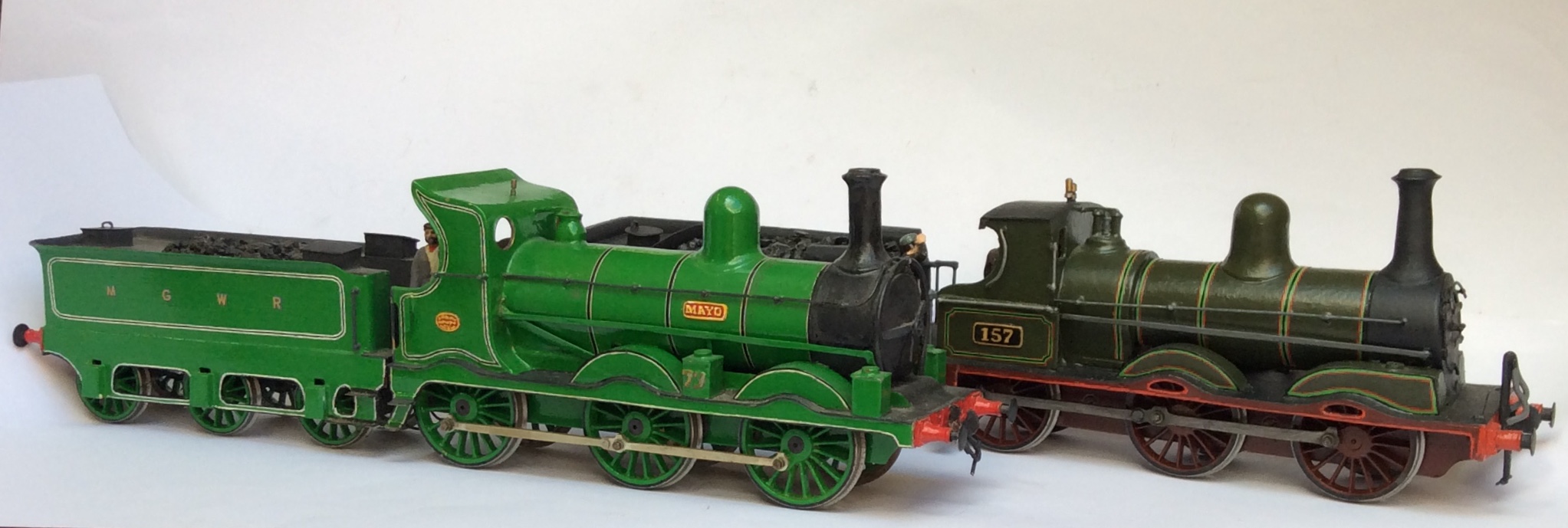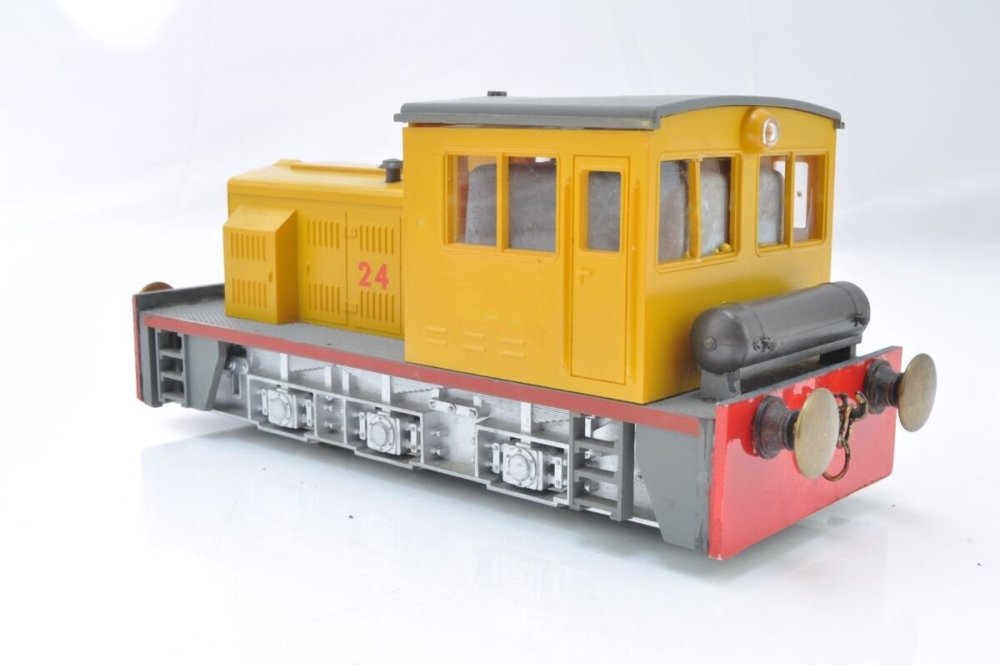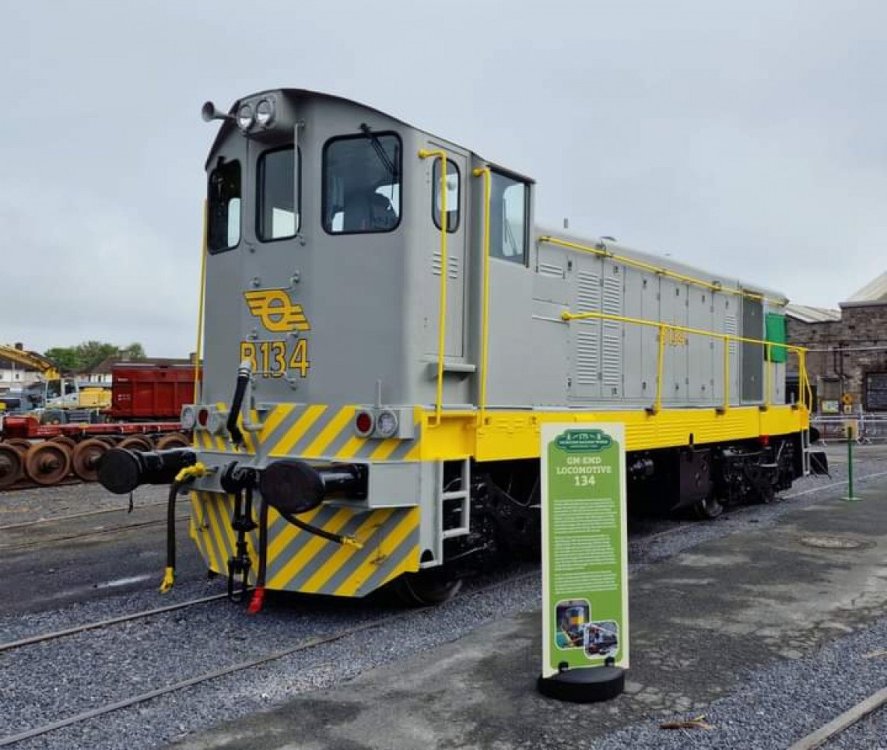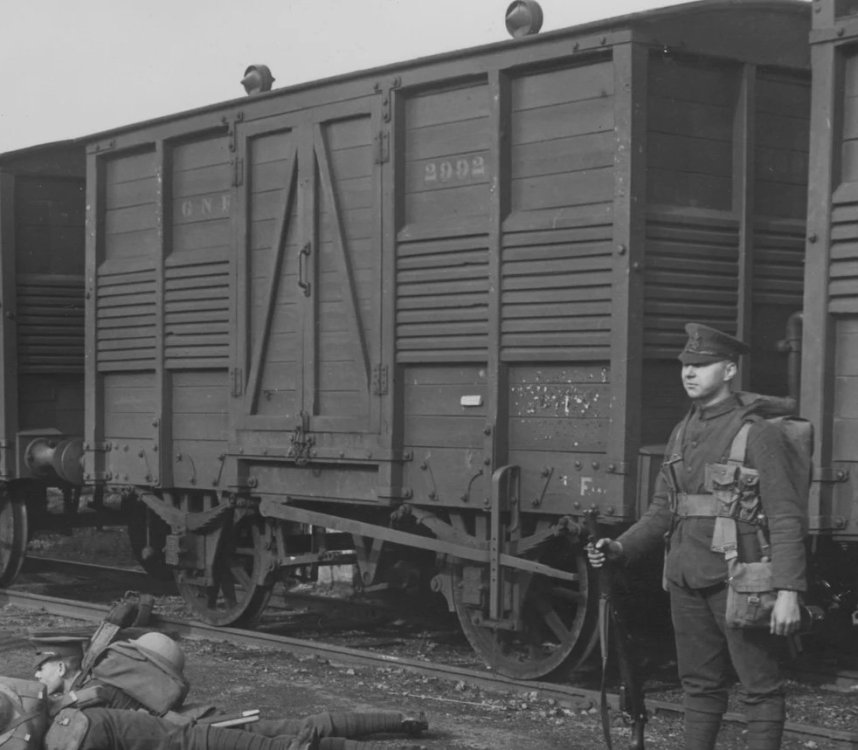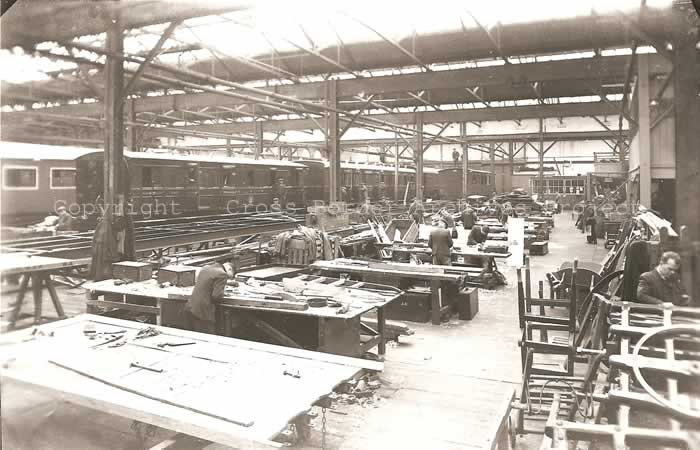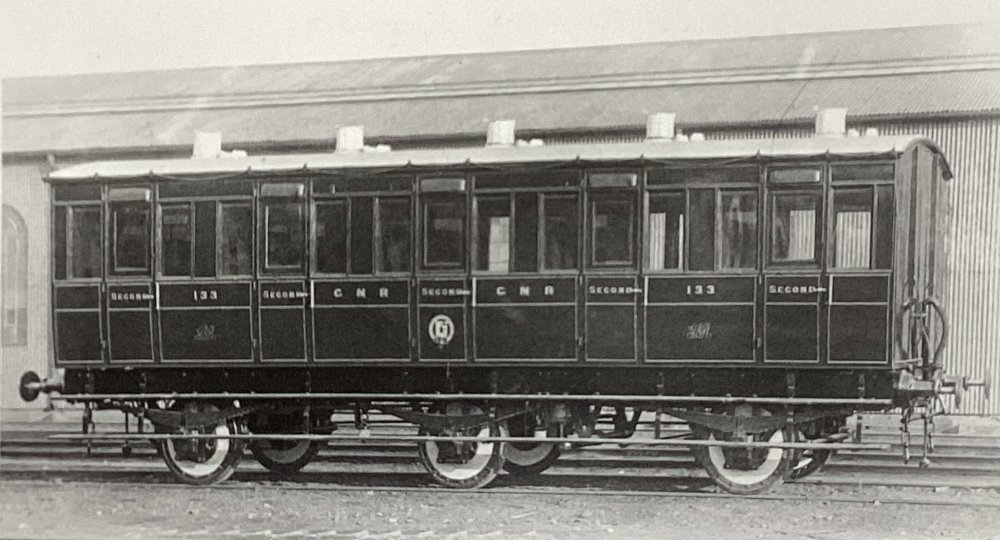-
Posts
326 -
Joined
-
Last visited
-
Days Won
2
Content Type
Profiles
Forums
Events
Gallery
Blogs
Store
Community Map
Everything posted by Northroader
-
That’s a beautiful layout, looks really good.
-
Thanks, Leslie, so what are we looking at here? I’ve done three 0-4-4T locos besides this one, and I’ve found that you need to allow the rear bogie to traverse sideways across the loco, besides just pivoting centrally, because the leading drivers are fixed to the superstructure. On a curve this displaces the rear end of the loco sideways by a fair amount, and so the pin the bogie turns on works in a slot across the bogie frame. The first batch of the GSWR 0-4-4T were originally built as Fairlie engines, with the driving wheels mounted on a bogie, as well as the carrying wheels at the back end, so the whole lot worked very like a modern Bo-Bo diesel. Later versions were built without the driving wheel bogie, I suppose because of the trouble with having flexible steam pipe joints, The trouble is in a model, this particular class does have quite an appreciable distance between the front and back sets of wheels, and you do encounter sharper curves, so you do need a bit of flexibility. To do this, the Driving wheel sets are mounted on a frame as well, with a central stretcher with a hole for a pivot screw which attaches the frame to the superstructure. The motor is mounted on the back axle, and points backwards so as to clear the central pivot. The motor fits inside the firebox, with a small amount of clearance on each side, so it can wag from side to side a bit. (If the engine had full side tanks it would be much better for the clearances) There’s a brass block at the leading end of the frame to help balance the motor overhang. Then the rear bogie has a full slot across the middle stretcher for the pivot pin to traverse across the full width. There’s pickups on all the wheels, though I see the wheels are starting to get a bit rusty. That’s the trouble with Slaters wheels, they do the tyres in mild steel to keep costs down, fair enough, but on a loco which has been around some time, you have to go round with some emery.
-
Everton FC have recently opened a souvenir shop in the glitzy new shopping centre called Liverpool One. After some consideration, they’ve called it Everton 2. Now any post they get is addressed to Everton 2, Liverpool 1.
-
May I suggest you go up a scale to 0, as you get older it’s something that’s going to happen anyway. You can pick up Atlas Plymouth diesels quite cheap second hand jobs. Nice runners, though they do grind a bit. Then just build a new superstructure in plastikard to what you want.
-
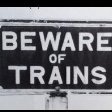
Clogherhead - A GNR(I) Seaside Terminus
Northroader replied to Patrick Davey's topic in Irish Model Layouts
I’ve done open wagon loads of crushed coal, and ballast, but first I make a wood block, lower than the sides, which is a loose fit inside the wagon, and then work on the block away from the wagon. Wrap and glue a paper strip round the block which is higher than the sides. Next put some neat pva glue round inside the top to seal the join between the block and the paper. Then arrange your load inside the top, with a slight hump in the middle, and treat it with the usual mix of diluted pva glue with a drop of washing up liquid, just like you was ballasting the track. Let it all harden off, then go round with a small pair of scissors or a craft knife, trimming the paper strip back down to where it meets the load. Finish off by painting the paper cut edge and sides to match the same colour as your load. Then ease it into the wagon, and off you go. -
Mention of the “Scotty Dog” 37s, Leslie, reminds me of a far off occasion when due to some on going industrial action, Cardiff Canton had a few of the Eastfield locos transferred down. One of them had been in for a service, and the night foreman was going round it. Luckily he spotted before it was released that some joker with a white paint pot had added a second scotty dog behind the first, getting on very friendly terms with it.
-
There’s this site says they were rebodied anyway, but I’d be hoping for a few pictures.(maybe in their gallery, I couldn’t be a**** signing on to Google!) https://www.classicbuses.co.uk/+LLSR.html youll be wanting a bridge next?
-

Ernies Massive Irish 1930's to 2005 Photo Archive
Northroader replied to Glenderg's topic in Photos & Videos of the Prototype
It would look nicer putting track down, Leslie, not taking it up. Actually, I think Ernie’s portfolio for the Valencia Harbour line is one of the most evocative set of railway pictures going. -
Not the best of times, my father could have been the guy in the picture before he got sent to the Western Front, but I found this picture on an RTE website, and it’s worth a look at. In my mind it’s very rare to get such a fully detailed look at a van, I’ve just trimmed the view to a single van. A GNRI ventilated van to go with the passenger coaches, for “perishable” traffic, meat, fish, dairy, and so on. There’s one of these in that poor picture of the trains in the carriage sidings at Amiens Street on page one of this thread, only that one doesn’t have the “torpedo” ventilators on the roof, which this one does have. The seriffed capitals suggest to me that it lettered to run with passenger stock, presume the van was painted brown? You can just make out a vac. pipe on the end, and there’s a vee hanger in the middle, suggesting a cross shaft coupled to a vac brake cylinder, although the hand brake is the old style lever to the block on the far end wheel, so the brake work could be a bit of a tangle. You’ll see that the leaf springs end in small swing links, which is a concession to a suspension running at passenger train speeds. The wheels, could these be some more 3’4” diameter jobs?
-
Perhaps, Leslie, if you can do a photo of beneath the loco looking up, folks can get a better idea of how the leading coupled drivers are mounted?
-
I’m afraid I never got round to lining it out, coal in the bunker and so on. It’s built as a double bogie, out of necessity to go round curves.
-

Ernies Massive Irish 1930's to 2005 Photo Archive
Northroader replied to Glenderg's topic in Photos & Videos of the Prototype
nice old brake van over on the left in the Dundalk shot. -
On that cross border archive I’ve linked to, there’s another interesting picture, the inside of Dundalk carriage shops in full swing: It’s the nearest coach that’s taking my attention, it looks four compartments well spaced out, with a toilet placed between the two pairs, so possibly two second class outside of two first with toilet accommodation? Then at the near end there’s a small brake compartment, so a brake composite? Another useful coach. The one beyond is a later bogie job, with a “cove” style roof, I.e. made from three radii.
-
In Norman Johnston’s book on GNRI loco’s, there’s one picture of a coach, a second class five compartment six wheeler illustrating the “Doncasterisation” of the GNRI by Park in the 1880s. The keynote in modelling this is the panelling of the sides. There’s a step between the lower panels and the upper panels, so that the mouldings covering the panel joins on the upper panels are flush with the lower panels, and the lower panel mouldings stand proud. The mouldings are nice to do in micro strip for a modeller, as they meet at the corners with right angles, the majority of coaches from other companies have the corner joins rounded off with a curved fillet, which makes the whole job very fiddly. The downside, I suppose, was that it was easier for dirt and moisture to accumulate at the corners. Here’s a detail from a preserved English GNR coach which should show the mouldings better. The other Irish firm that did this was the MGWR, but the windows had round tops and square bottoms, rather than the rectangular windows of the GNRI. The “generic” 4w/6w coaches by Hornby or Hattons in 4mm scale have the other type of body side mouldings, on flush top to bottom panelling, which is sufficiently different to rule them out for representing the GNRI or MGWR. Looking at the brand new coach picture, there’s two things catch my eye. First off, the coach ends are supported by two vertical braces. In wagon building practice, both vans and open wagons have these, but on a coach? I fancy this was quite uncommon, there’s another picture of a new six wheeler on the “cross border archive” without them, which I would think is the norm. (I haven’t copied this as it’s overprinted) https://www.louthnewryarchives.ie/online-exhibitions/great-northern-railway/engineering-pride.shtml The other thing is the wheels, which stand out, as they are Mansell type, with the hardwood segments between the centres and the tyres, and these are new clean wood, freshly varnished. They don’t look full size, usually the top of a coach wheel disappears well up behind the sole bar., and the tops of these are barely behind. Checking with the diagrams I’ve been kindly supplied with, it turns out the GNRI had their own standard coaching stock wheel size, 3’4” diameter (!) Pity, in 7mm I go for Slaters wheels, and they do 3’1” wagon, or 3’7” coach, so I’m afraid there’ll be some oversize wheels on my coaches, and very scruffied up so as to be less obvious.
-
Hope they’ve found you a decent abode. It looks as if I’ll be going as you’ll be coming. Good luck with it all, and looking towards more tales from the workbench.
-
With those couplings, they’re formed round small button magnets. To attract each other, you need a North Pole facing a South Pole, so you need the different poles facing out at the opposite ends of the vehicle, and if the vehicle is turned round, they will repel each other. Watching the video, you can see the one coupling dip as it uncouples. This says to me you have an electromagnetic coil under the base board, and when this is switched on, the field will attract the one coupling down towards it, and push the other coupling up away from it, so you can pull the wagons apart. I don’t buy into the idea of having a retractable stop coming up to hold the wagon, and you use extra pull from the loco to force the vehicles apart.
-
Ah well, imagination is a wonderful thing.
-
I might have got me geography wrong, but I got the idea from somewhere there was a branch up to Glendalough. Maybe I just imagined it?
-
Thanks again, Paul. One thing that’s emerged is that the vac cleaner van and the standard brake van both have 28’ bodies.
-

Ernies Massive Irish 1930's to 2005 Photo Archive
Northroader replied to Glenderg's topic in Photos & Videos of the Prototype
It looks like a stencilled “8439”, so I’m guessing a service vehicle series? -
I hadn’t commented on @seagoebox’s Antrim picture, which looks around the 1920/30s timeframe. There’s no oil lamp chimneys, so electric lights are fitted, and all the lower footboards are removed, including the brake van. We’ve got two six compartment thirds, followed by a four compartment coach, probably a composite? There’s a ventilator centrally placed, but no door handles, so most likely a pair of toilets for the two inner compartments. At the back end there’s a standard brake van, with side lookout duckets.
-
There’s a real treasure appeared on @Irishswissernie Photo collection today, an old GNR brake van converted for service use. It’s got the window and door spaces matching what might be termed the later standard vans, but then you’ll see: Axle-guards on the front face of the sole bar and the springs behind, Louvre ventilators over all the door windows, simplified mouldings over the panelling. So just like the composite that appeared in the smug mug photo a few posts ago. Presumably built some time around the GNR amalgamation before Park standardised the “Doncaster” appearance, or possibly from a constituent company? Wonder if it started life with a “birdcage” lookout on the roof? Compare it with the later vans, they have extra panels under the lookout, so would this be a 30’ body, and later ones are 32’? Either way, it’s crying out to be modelled.
-

Ernies Massive Irish 1930's to 2005 Photo Archive
Northroader replied to Glenderg's topic in Photos & Videos of the Prototype
Now, that middle picture sparked my interest, sure enough, it’s still got “GNR” on it. An old six wheel brake van. Ernie, could I post a copy on my GN coaches thread on here, please? It’s the clearest picture I’ve seen of one of these. -

Clogherhead - A GNR(I) Seaside Terminus
Northroader replied to Patrick Davey's topic in Irish Model Layouts
To me, TBH, it looks too pale grey. In the past I’ve used some sand my wife gets from a garden centre for her potting, rather than sea sand or builders sand. (in the picture, it’s mixed with some ballast from finer scales than 7mm.) -
No, six wheels. Over this side of the channel quite a lot of railways went in for taking the middle axle out of six wheelers in later years, but it doesn’t seem to have been such a common practice over in Ireland?
.png.c363cdf5c3fb7955cd92a55eb6dbbae0.png)
